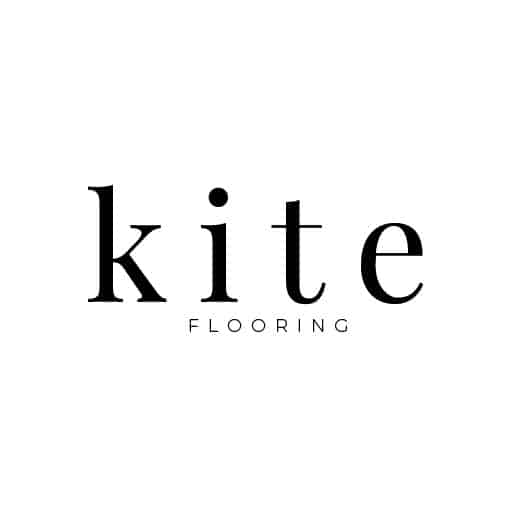OK, so this is one of the most common questions we get asked.
So rather than being cagey about pricing (which seems to be the way in our industry), we thought we would try and answer it. Pricing up a flooring project is not straightforward, but broadly, there are three variables; your floor, the subfloor and the fitter.
Firstly, your floor.
1. The Platform
If we just focus on engineered wood flooring, there are two main factors – The Platform and The Finishing.
When we say The Platform, we mean the actual timber. If this is an engineered product, it will have a timber veneer (often oak), and then a core (layered or solid). The raw materials will come from a range of sources but “European Oak” is a pretty common reference. Obviously, Europe is a big place, but on most floors, there is very little transparency about where the timber actually comes from. The most common supply chain is European Oak, shipped to the Far East where the platforms are pressed and then back to the European Market. Plank flooring made in the Far East will often be 190mm wide and 1.9m in length. Why? Well these dimensions fit perfectly into a 20ft container.
Flooring platforms can also be made in Europe and these floors are more customisable, so can be made in different widths and lengths. Both supply chains will use different grades of timber. Cleaner grades with fewer knots are more expensive. Rustic floors are the cheapest because you can use the whole of the tree.

From a cost perspective, Far Eastern platforms will always be the cheapest, despite shipping costs, as they are made in larger quantities.
But is there a difference in quality?
At Kite, our more cost-effective floors are Far Eastern platforms. And they can be great. But you don’t have as much control over the production process. This means colour variation within batches (so don’t rely too much on your samples!), different knot filling strategies, and subtle changes in the plank structures (such as bevels or the tongues and grooves).
And for many clients, that’s absolutely ok. At Kite, if we do use Far Eastern platforms, unlike many of our competitors, we do the oil finishing in Europe. This gives you more control over the final product than a pure containerised floor.
2. The Finishing
The second factor you should consider is the finishing. This is the treatment that is applied to the surface of the floor to 1) protect it from everyday family life and 2) change its appearance to achieve a design style. Finishing can either be lacquered, oiled, or even unfinished.
All methods can produce great floors. But each has its advantages and disadvantages. A lacquer is like a protective paint. This means it’s a very strong surface treatment. Scrape it, and it’s hard to repair, but the surface can be very strong so very little maintenance is required. Try to avoid cheap lacquered floors, as they almost always have a fake sheen.
At Kite, we generally sell oiled floors. These are either UV oiled, which is a surface treatment that runs under a UV light and dries instantly. Like a lacquer it’s super strong, but again it’s a surface treatment. The production process on these floors is very quick, so costs are low. On the other hand our premium oiled floors actually dry into the timber.
At the high-end of the market, you can have different treatments that are combined to give a floor a design aesthetic. These include brushing with wire brushes, smoking (in chambers of ammonia), bleaching, multiple coats of oil, hand scraping, the list goes on and on. The more processes a floor goes through, the more it costs (we have a floor range where there are 8 processes to achieve the final finish).
Other factors that vary the price of your floor include the grade (less knots is more expensive, than rustic), shape (herringbone and chevron have more wastage than plank), wood species (Elm, Ash Douglas Fir), and the origins of the timber (we do a genuine reclaimed range that’s spliced onto an engineered base).

Our engineered wood flooring ranges start from £65. These are typically Far Eastern platforms, finished in Europe with two coats of High-Quality UV oil (we use a brand called Ciranova). You can buy cheaper floors online, but you generally see variations in colour between batches, poor knot-filling strategies, and oils that can scratch easily. Don’t expect much customer support from these retailers as well.
For cleaner grades on Far Eastern platforms expect to add around £20 per m2, for each grade up. Prime grades, with an invisible UV oil, cost £100 per m2.
European platforms start at around £95 per m2, for straightforward UV oils, in a Rustic grade, and this can double for perfect grades, with several treatments. Less common wood species such as Elm or Ash, are only available in bespoke options.
Next Your Subfloor
Remember, almost all our floors are cosmetic, so they sit on top of a structural base. There are many different types of subfloor, but the most common are floorboards, ply, OSB (the boards like Weetabix), concrete or tiles.
To fit any form of solid flooring, the subfloor must be –
- Level – As flat as possible, with no dips or raises.
- Sound – No movement. You don’t want a squeaking subfloor, as once you fit your new floor, that noise won’t go away
- Dry – Wood floors and moisture are not a good combination. This is especially relevant if you are laying a new screed. Or if you are fitting a floor in a basement flat with a history of moisture issues.
There are some quite strict guidelines on each of these factors, that are set-out in the British Standards (which are effectively the rules that govern floor fitting). There is a Blog Here.
These standards are super conservative, but if you follow them, you won’t have any problems with your floor.
Subfloor preparation involves the cost of materials and labour. This could be as simple as stapling a layer of ply, if your subfloor is chipboard, or a 3mm skim of quick drying levelling compound if you have a new screed. It could also involve using quick drying mortars such as Ardex to fill deeper holes. Smoothing compounds can also be used, and DPMs (Damp Proof Membranes) that suppress moisture. And sometimes a combination of several strategies. Occasionally, the subfloor will be so uneven that surface strategies cannot be used. In these cases, you either have to remove the subfloor and level the joists, or create an entirely new subfloor on top of your existing uneven one.
Certain floors are more forgiving on uneven subfloors than others. Plank flooring can be glued and nailed to ply. It will then take the shape of the subfloor, but you can have a successful installation, on a slightly uneven surface. For Herringbone or Chevron, which we recommend is fully glued, the subfloor must be level.
It can all get very technical. And expensive. But it’s really important to factor in these costs, to ensure you have a successful installation.
Your Fitter
Once you have prepared your subfloor. The floor has to be fitted.

Generally, it’s better for whoever is fitting the flooring to prepare the subfloor. This avoids awkward situations where a contractor has prepared a subfloor, and then the person fitting the floor isn’t happy. It’s quite common for a client to have paid money for subfloor preparation in this situation, so things can get awkward. Floors are mainly fitted Glued or Floated (we have a blog here about this).
So how much should you pay for floor fitting? The truth is, just like not all floors are equal, not all fitters are equal.
Fitting a laminate in a new build, with a perfect subfloor, is straight-forward. Fitting a Herringbone, with a two-block border that runs around a kitchen island, is not.
The way we price our fitting works is we work out what a fitter needs to support their families and then balance this against buying the proper tools, insurance, van and a labourer (for when things get heavy). We also then factor in delays (when they can’t work because windows don’t turn up etc), the occasional holiday (everybody needs one), and for when a nightmare happens (when vans get broken into!). In London, this means certain rates need to be paid. But this can be different outside. There can also be some flexibility on larger projects. Smaller projects can be expensive.
At Kite, we make a margin on our fitting teams, because we 1) carry out all the pre-site surveys to ensure the projects are ready to go when the teams turn up (this includes screed tests, and laser level tests), 2) arrange for all the materials to be onsite exactly when they’re needed, 3) coordinate schedules to manage delays and 4) work with specialist parquet floor fitters, who often have qualifications, such as NVQs.
This means we are normally more expensive than if a contractor or a local tradesperson fits the floor. On larger building or renovation projects, it can therefore make things more straightforward if we just supply the floor. And, if you are fitting a straightforward plank floor, outside London, you may also find a local contractor who will be cheaper.
On more technical installations, it can be better to use a professional fitter.
So, to help you budget for your project, we’ve prepared the below table with five costs that you will more than likely need in your flooring project. Note, these are just the main costs, and are based on a typical residential project of 40m2, in London and the Home Counties.
| Laminate | Engineered £ | Engineered ££ | ||
| 1 | Product | £36.00 | £65.00 | £110.00 |
| Perfect | Basic Levelling | Ply and Levelling | ||
| 2 | Subfloor | £0.00 | £27.00 | £50.00 |
| Flooring Floated | Plank Glued | Parquet | ||
| 3 | Fitting | £48.00 | £54.00 | £60.00 |
| Underlay Standard | Wood Glues | |||
| 4 | Accessories | £8.00 | £10.00 | |
| Skirting (remove and refit) | Scotia Beading | |||
| 5 | Skirting | £30.00 | £15.00 |
Costs per m2, or per m (for skirting) and Inc VAT. These costs are the main costs for budget purposes only. Other costs could include, the removal of existing flooring, moisture suppressing (DPM), block borders with parquet, stair cladding, and heavy item charges.
So, for a Laminate floor, on a perfect subfloor, with scotia beading, you may end up paying around £122 per m2, for the entire project.
For a premium engineered parquet floor, with significant levelling, costs could be £260 per m2.
As we explained before, you may find more cost-effective solutions by simply purchasing the product through Kite.
But you also have to balance this against how technical the installation will be, and if your contractor can deliver this.


